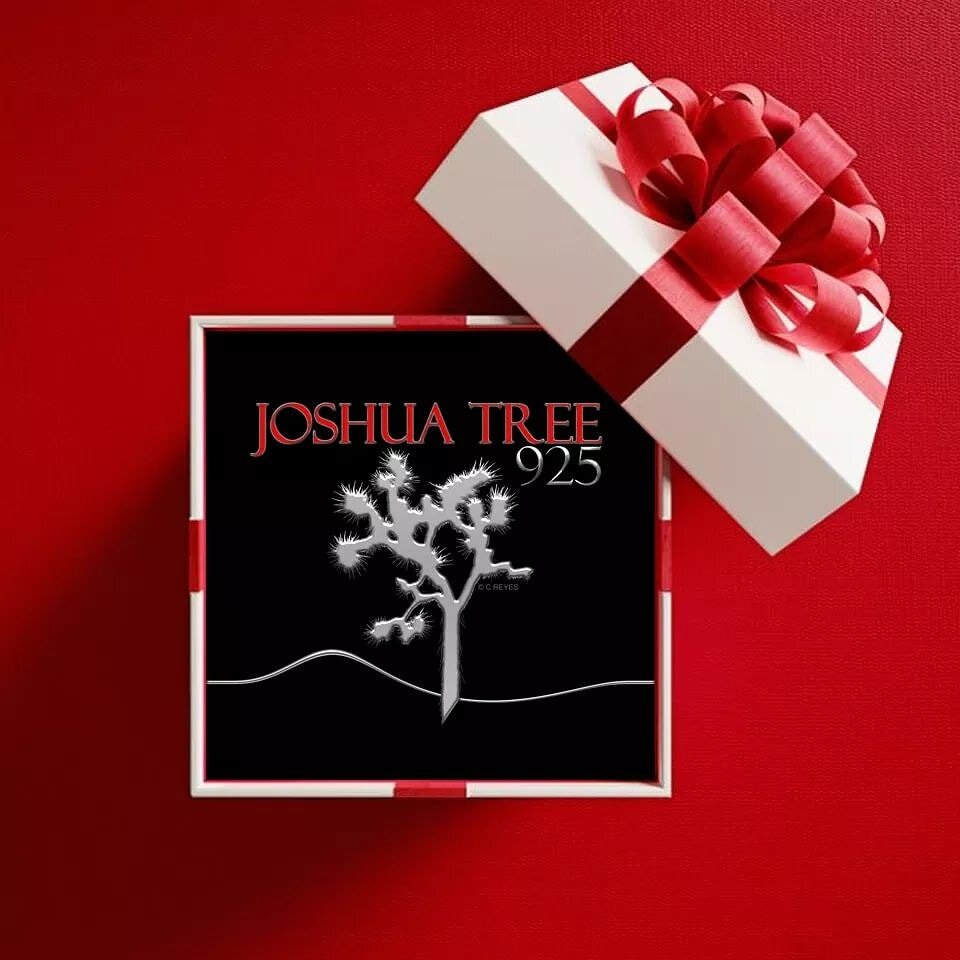
Joshua Tree 925 ~ An Elemental Gift of Love
Introducing Joshua Tree 925, where the magic of sterling silver meets the artistry of Carlos Reyes. Behold the CREYES Collection—a testament to passion, craftsmanship, and timeless elegance.
Immerse yourself in the allure of handcrafted beauty, where each piece tells a story of dedication and love. As the designer and maker behind the brand, Carlos Reyes infuses every creation with a unique blend of creativity and expertise, ensuring that each item in the collection is a masterpiece in its own right.
With only a limited number available, the CREYES Collection is an exclusive invitation to embrace the extraordinary. These sterling silver treasures, meticulously shaped by Carlos's skilled hands, are more than jewelry—they are elemental gifts of love. A manifestation of craftsmanship and emotion, each piece in the collection is a celebration of individuality and enduring style.
Indulge in the rarity of this collection, a symbol of sophistication and refined taste. Joshua Tree 925 stands as a testament to the exquisite blend of design and devotion, creating an intimate connection between the wearer and the artistry of Carlos Reyes.
Seize the opportunity to adorn yourself or a loved one with a piece of this limited edition collection—an investment in elegance, a testament to love. Elevate your style, cherish the moment, and embrace the extraordinary with Joshua Tree 925 by Carlos Reyes. "An Elemental Gift of Love" awaits those who desire a touch of exclusivity and a lifetime of beauty.
Silver is the metal of emotions, of the psychic mind, and of loving as well as healing. It is used to bring patience and perseverance to the wearer.
Silver is a ductile and malleable metal and it is stronger than gold. Because it is an easy metal to work with and also because of its color and its shine, men consider it as one of the most precious metals. About 70% of the world's production is used in coin production. Another part is used in jewelry and a little percentage in photography and chemistry. The word silver comes from the Indo-European "arg" meaning "shiny" or from "Ar-jun" in the Sanskrit language meaning the same thing.







Discover Your Elemental Gift of Love: The Timeless Elegance of Joshua Tree 925 by Carlos Reyes
In the vast, mystical expanse of the Mojave Desert, where the iconic Joshua Trees stand as silent sentinels of time, a unique artistry is born. Welcome to the world of Joshua Tree 925 by Carlos Reyes, a sterling silver jewelry brand that transcends mere adornment to become "An Elemental Gift of Love."
At the heart of this extraordinary brand is Carlos Reyes, a visionary Fine Sterling Silver Jewelry Designer and artisan whose deep, personal connection to the Joshua Tree and its surrounding landscape infuses every handcrafted piece. More than just jewelry, each creation from Joshua Tree 925 is a tangible representation of nature's raw beauty and heartfelt emotion, meticulously shaped by Carlos's skilled hands. A proud Puerto Rican Born American Designer, Carlos Reyes brings a singular blend of precision and passion to his craft.
His journey began with a profound appreciation for the majestic Joshua Tree, evolving into a dedicated pursuit of capturing its intricate details and unique spirit in sterling silver. This isn't just a business; it's a legacy, a sustainable art form born from a lifelong obsession with the Hi-Desert's most beloved icon.
What sets Joshua Tree 925 apart is the unwavering commitment to exquisite craftsmanship and authentic inspiration. Each pendant, earring, and charm is a testament to timeless elegance, capturing the true form of the Joshua Tree – from the delicate blooms of its sculptural branches to its resilient, twisted silhouette. Every curve and texture is rendered with painstaking detail, transforming raw silver into wearable art that resonates with the desert's untamed spirit.
The CREYES Collection, a signature offering, epitomizes the brand's dedication to exclusivity and artistry. These limited-edition sterling silver treasures aren't just accessories; they're conversation starters, symbols of devotion, and cherished reminders of the profound connection between humanity and nature. Whether it's the highly sought-after Joshua Tree Bloom 3D Pendants or the celebrated "Heart of the Hi-Desert™ Joshua Tree Earrings – often lauded as "the best on the market" by delighted customers – each piece invites you to carry a piece of the desert's magic wherever you go.
For those who feel an emotional pull to the tranquil beauty of Joshua Tree National Park, or who seek a meaningful piece that reflects their appreciation for authentic craftsmanship and local artistry, Joshua Tree 925 is more than a purchase; it's an investment in a story, a memory, and a timeless connection.
Experience the allure of Joshua Tree 925 by Carlos Reyes. Discover your own "Elemental Gift of Love" and embrace the extraordinary. The entire, breathtaking collection, including Carlos's highly coveted Signature Sterling Silver Rings, is exclusively available for in-person viewing inside ARTFX, Old Town Yucca Valley, or explore and purchase online at www.joshuatree925.com.
BE BOLD - Wear the Power of Nature!
Joshua Tree 925® - An Elemental Gift of Love!

